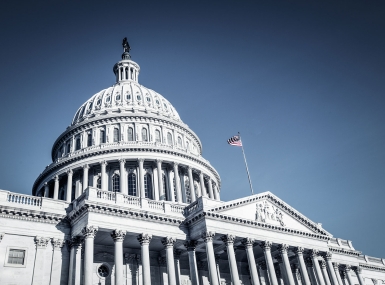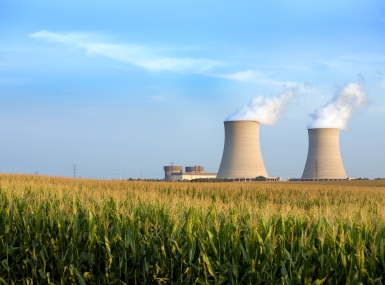Support Balanced Renewable Energy Development in Farm Country

Author

Owen Hart

Charlotte Mitchell Duyshart
Upcoming Events
Related News
ACTION NEEDED:
Urge policymakers to establish guidelines preserving county authority to protect prime farmland from conversion from renewable energy development. Immediate action is necessary to ensure that counties can protect agricultural lands and maintain rural character while fostering responsible renewable energy growth in their communities.
BACKGROUND:
American farmland is the foundation of our nation's economy, culture and food security. As the demand for renewable energy surges, agricultural lands in rural areas have become prime locations for utility-scale renewable energy projects. This transition holds immense potential for local economic growth and sustainability but also raises critical questions about the preservation of farmland and rural character.
Counties are at the heart of these decisions. With authority over land use, zoning and permitting, counties have a unique responsibility to manage the intersection of renewable energy development and farmland preservation. By fostering collaboration with key partners, adopting innovative policy approaches and balancing diverse community priorities, counties can play a pivotal role in ensuring renewable energy projects contribute to a more sustainable future for rural communities.
- Rapid Growth in Renewable Energy: The U.S. renewable energy sector is expanding at an unprecedented pace, driven by technological advances, supply chain improvements and federal and private sector investments. According to the U.S. Department of Agriculture (USDA) Economic Research Service, solar energy – the fastest-growing renewable energy segment – is projected to account for nearly three-quarters of renewable electricity generation growth in 2025.
- Farmland at Risk: The U.S. has lost over 75 million acres of farmland since 1997 due to urbanization, policy shifts and renewable energy development, corresponding to roughly 2,000 acres of farmland lost per day over that period. Renewable energy represents a growing driver of farmland loss.
- Counties at a Crossroads: Counties face unique challenges in balancing renewable energy projects with farmland preservation, including competing land uses, property rights concerns, equitable economic benefits, environmental impacts and complex regulatory landscapes.
STATISTICS:
The United States loses an average of 2000 acres of farmland every day
From 2012 to 2020, more than 90 percent of utility-scale wind farms and 70 percent of solar farms were installed on working farmland
Approximately 2.5 million acres are expected to be developed for utility-scale solar installations by 2040
An estimated 83 percent of new solar projects are expected to be situated on working farmland
POLICY RECOMMENDATIONS:
- Empower Local Renewable Energy Siting: Allow county governments to guide renewable energy development toward preferred locations, such as on existing structures, brownfield sites and marginal agricultural land, while incentivizing practices that protect prime farmland, maintain agricultural productivity and safeguard soil health.
Protect Local Authority and Consultation: Preserve county authority over renewable energy siting and permitting by opposing state and federal preemption of local land use decisions. Encourage partners to consult with county governments throughout the lifecycle of renewable energy projects to ensure alignment with local priorities.
Promote Community Benefit Agreements (CBAs): Support the development of CBAs to ensure local governments and communities have a seat at the table in renewable energy project decision-making and receive equitable benefits across the project’s lifecycle.
Invest in Research and Best Practices: Advance research into innovative renewable energy siting approaches and compatible land uses, such as agrivoltaics, to optimize both energy production and agricultural benefits.
Establish Environmental Safeguards: Require project developers to adhere to standards that protect soil health, preserve water rights and minimize long-term environmental impacts beyond the lifecycle of renewable energy projects to keep America farming.
KEY TALKING POINTS:
The rapid expansion of renewable energy, particularly solar, offers significant opportunities for rural communities but poses risks to prime farmland and rural character. Counties play a critical role in guiding projects to align with local priorities while protecting agricultural lands.
Counties must retain authority over renewable energy siting and permitting to balance competing land uses, property rights concerns and environmental impacts. Policies that encourage collaboration between developers and impacted communities, including local governments, and promote the adoption of tools like Community Benefit Agreements can deliver equitable outcomes for county residents.
Investing in research and promoting best practices, such as agrivoltaics and the use of marginal lands for renewable energy projects, can help optimize energy production while preserving farmland and supporting long-term environmental health.
Related News

Senate Agriculture Committee releases reconciliation budget text; Contains changes to SNAP
On June 24, the Senate parliamentarian approved a new version of the benefit cost share provision. Under this revision, states may use either their FY 2025 or FY 2026 payment error rate to determine their required match for FY 2028. For FY 2029 and beyond, the match is based on the payment error rate from three fiscal years prior.

White House signs executive orders to advance nuclear power
On May 23, President Trump signed four executive orders focused on expanding the nuclear energy industry. The executive orders aim to position nuclear power as a key contributor to energy reliability, economic growth and national security — especially as artificial intelligence, advanced manufacturing and military operations increase demand for stable, high-density power sources.

U.S. House passes rescissions package
On June 12, the U.S. House of Representatives passed the Rescissions Act of 2025 (H.R. 4) in a narrow 214-212 vote. The legislation would cancel $9.4 billion in previously approved federal funding, marking the Trump Administration’s first formal attempt to codify funding cuts proposed by the Department of Government Efficiency (DOGE).